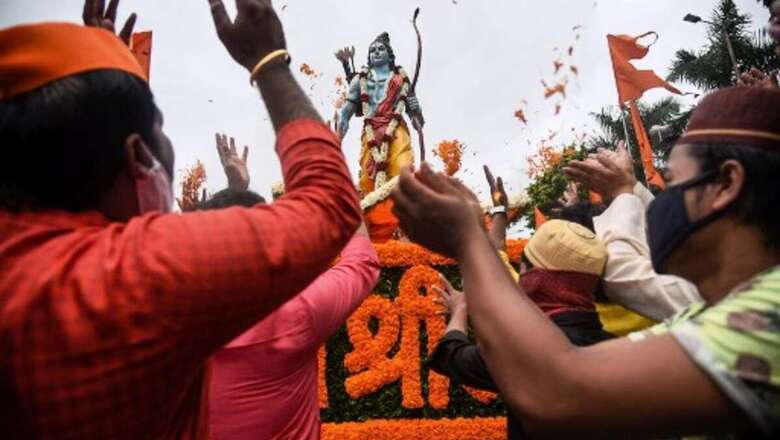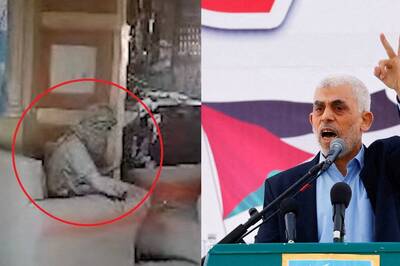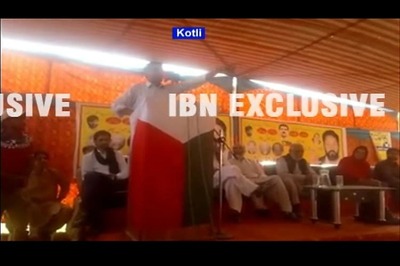
views
The one name missing from conversations around the Ram Temple ground-breaking ceremony was that of RSS pracharak Moropant Pingle, one of the foremost scholars of the Sangh.
Scholar Shridhar Damle argues that it was Pingle who prepared the ground on which LK Advani took out his Rath Yatra. He recalls Pingle telling him that the Sangh had taken Ayodhya before Mathura or Kashi, because among Hindus, Ram had a wider reach than Krishna or Shiv.
In an interview with News18.com, Damle talks about Ayodhya, the Uniform Civil Code, and the next big task that the Sangh has taken upon itself before completing 100 years in 2025.
A lot of people who were connected with the Ram Janmabhoomi movement weren’t part of the ceremony at Ayodhya. How do you feel about that?
Yes, the RSS chief in his speech mentioned LK Advani’s name to remind people of his contribution, along with the names of former VHP president Ashok Singhal and Ram Janmabhoomi Nyas’ first president Ramchandradas Paramhans. But having seen the press coverage of the entire ceremony, I think the one name that the media forgot to mention was that of RSS senior pracharak Moropant Pingle. His role in the entire movement was forgotten by the media.
The RSS had played a major role in the anti-Emergency struggle and Pingle had a huge contribution in it. But his contribution towards Ram Janmabhoomi was even more substantial. It was he who arranged VHP’s cross-country Ekatmata Yatras, mobilised hundreds of trucks bearing images that showed Ram lalla behind iron bars, and organised the shila pujan to galvanise support for the Ram Janmabhoomi movement. It is he who prepared the ground on which Advani later took out his Rath Yatra.
I once asked Moropant Pingle why the Sangh chose to focus all its energies towards Ayodhya and not towards, say, the temples of Kashi and Mathura. In case of Ayodhya, there were no historical documents, for instance, which were readily available in case of Mathura and Kashi from the time of Aurangzeb.
Pingle told me that across Uttar Pradesh, Bihar, Rajasthan, Madhya Pradesh, Andhra Pradesh and Maharashtra, there was lord Ram impact among people. But such a mass appeal was not there for lords Krishna and Shiva. The Hindu Mahasabha had made an attempt to stir a movement in Kashi, but it had fizzled out due to lack of common people’s participation. So, the Sangh wanted a movement only around lord Ram.
Pingle told me: “let us build a grand temple at Ayodhya, the path to build temples at Mathura and Kashi will be cleared automatically”.
Do you feel that Mathura and Kashi are next on the Sangh’s agenda?
I don’t think the Sangh is in a great hurry on this issue. Focus will be to build the grand temple, as promised, within three to three-and-a-half years. Maybe in time for Ram Navami. But the issue will, of course, be kept alive, meanwhile, by media, and ambitious leaders of the Hindu Right, which will benefit VHP and BJP.
… which is when Uttar Pradesh will go to polls and a year later general elections will be held...
AB Vajpayee, after becoming the PM in 1999, said during his visit to the US: “give us two-thirds majority and we will build the temple at Ayodhya”. Yes, the timing of the conclusion of the grand Ram temple construction could favour the BJP in Uttar Pradesh. And a pitch similar to what Vajpayee made then could be made again before 2024, this time for Mathura and Kashi.
Is the next big agenda before the Sangh the implementation of the Uniform Civil Code?
Again, I don’t feel that the Sangh will be in a rush to get this done. Getting UCC implemented legally across the country was opposed by none other than MS Golwalkar, the second RSS chief. He said you cannot change people by law. He said that the change had to come from within the communities. For instance, he said that the anti-dowry law had become a mockery given how rampant the exchange of dowry was at that time.
Sangh would like a consensus to be built around the subject over time. And given the reaction of political parties on the issue of Ram Mandir, getting political support for UCC across party lines may anyway not be a difficult task for the BJP.
A year after the next general elections, in 2025, RSS will complete 100 years. Now that it has achieved its objective as far as the Ram Mandir is concerned, what other goals would the Sangh like to have achieved by then?
As of today, the RSS is working hard on expanding their footprint across the country’s 5 lakh villages. Today, they have a presence in nearly 3.5 lakh villages. There is a thinking in the RSS that the basic need is to change the economic model of rural India and to prevent the exodus of young people from the villages and make them self-sufficient. They feel that the Indian economy should ultimately function on the lines of the Japanese model of decentralised economy, in which the industries are fed raw material and other resources from its own villages. The big multinationals will exist but they will get everything from within the country. This will be the Sangh’s priority for the next five years.




















Comments
0 comment